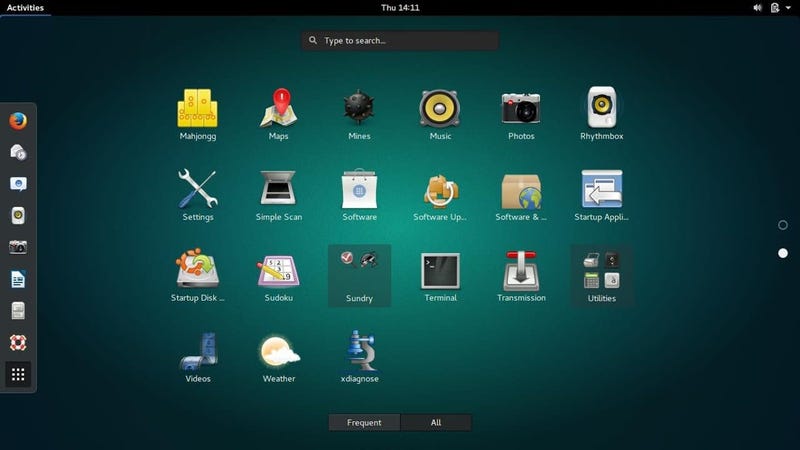
What operating system do you use? For some, that question may as well be posed in Latin or Sanskrit. For others, it’s an invitation to have a heated debate about the benefits of GUI vs. command line, modern day UI vs. old school metaphor, the pros/cons of Windows 10, LAMP vs. IIS … the list goes on and on. For most, however, the answer will be a variation on Windows or Mac.
But anyone that has used Windows (in any of its incarnations) long enough knows, at some point, frustration will rule the day, and you’ll be working along and, seemingly out of nowhere, Windows will decide to apply updates and restart, putting your work at risk while you go through the lengthy process of applying updates and rebooting. Or what about the inevitable virus or malware? You spend precious dollars on antivirus software or, worst case scenario, you have to send the machine to your local PC repair to get the virus removed. All the while, work is not being done. While Apple’s macOS products suffer less from the vulnerabilities found in the Windows platform, they also come with a fairly hefty price tag.
There is, however, another alternative to both that doesn’t cost any money to download and install, and is far more immune to viruses and malware. That operating system is Linux. What is Linux? Let’s take a look.
So what exactly is it?
Linux came about in the mid-1990s, when then-student Linus Torvalds was tasked with creating a disk driver so he could read the Minix file system. (Minix is a POSIX-compliant, UNIX-like operating system that saw its first release in 1987.) That project eventually gave birth to what would come to be known as the Linux kernel. The kernel of an operating system is an essential core that provides basic services for all aspects of the operating system. In the case of Linux, the kernel is a monolithic, UNIX-like system which also happens to be the largest open source project in the world. In the most basic terms one could say, “Linux is a free alternative to Microsoft Windows and macOS.”
Linux is a ‘can do’ platform
For those that are concerned about getting their work done with Linux, let’s take into consideration how the average user works with a computer and how Linux can meet those needs. For the average user, a computer is a means to:
- Interact on social media
- Read email
- Listen to music
- Watch Youtube or Netflix
- Occasionally write something
Five years ago, each of those tasks would have been handled via a different application. Now, not so much. Modern computing tasks are most often relegated to a browser. Facebook, Google Docs, Netflix, Outlook 365… they’re all used within the likes of Chrome, Firefox, Safari, or Internet Explorer. Each one of those browsers does a good job of enabling the user to do their thing. It’s only on very rare occasions that a user will land on a site that will only work with one of the above browsers.
So considering that the average user spends most of their time within a browser, the underlying platform has become less and less relevant. However, with that in mind, wouldn’t it make sense to use a platform that doesn’t suffer from the usual distractions, vulnerabilities, and weaknesses that plague the likes of Windows? That’s where Linux shines. And with Linux being open source, users are not only able to use the platform for free, they can also alter and re-distribute the operating system as their own distribution.
Linux lets you customize and share
There are basically two different types of software: Proprietary and open source. With proprietary software, the code used to create the application (or operating system) is not available for public usage or viewing. Open source, on the other hand, makes the code used to create the software freely available. While the average user might not be concerned with the option to make alterations to their OS, this functionality of Linux helps to explain why this operating system doesn’t cost you anything. Linux is an open source platform, meaning that the code is available for anyone to download, change, and even redistribute. Because of this, you could download the source code for the various elements that make up a Linux distribution, change them, and create your very own distribution.
And as for that distribution, this is very often a point of confusion with new users. As mentioned above, Linux is really just the kernel of the operating system. In order to actually use it, there are layers that must be added to make it functional. The layers include things like:
- Device drivers
- Shell
- Compiler
- Applications
- Commands
- Utilities
- Daemons
Developers will sometimes adapt those layers, to achieve a different functionality, or swap out one system for another. In the end, the developers create a unique version of Linux, called a distribution. Popular Linux distributions include:
- Ubuntu Linux
- Linux Mint
- Elementary OS
- openSUSE
- Fedora Linux
- Arch Linux
- Debian
- Manjaro
- CentOS
There are (quite literally) thousands of Linux distributions available. To see a listing of which distributions of Linux are popular, take a look at Distrowatch.
[“Source-lifehacker”]
